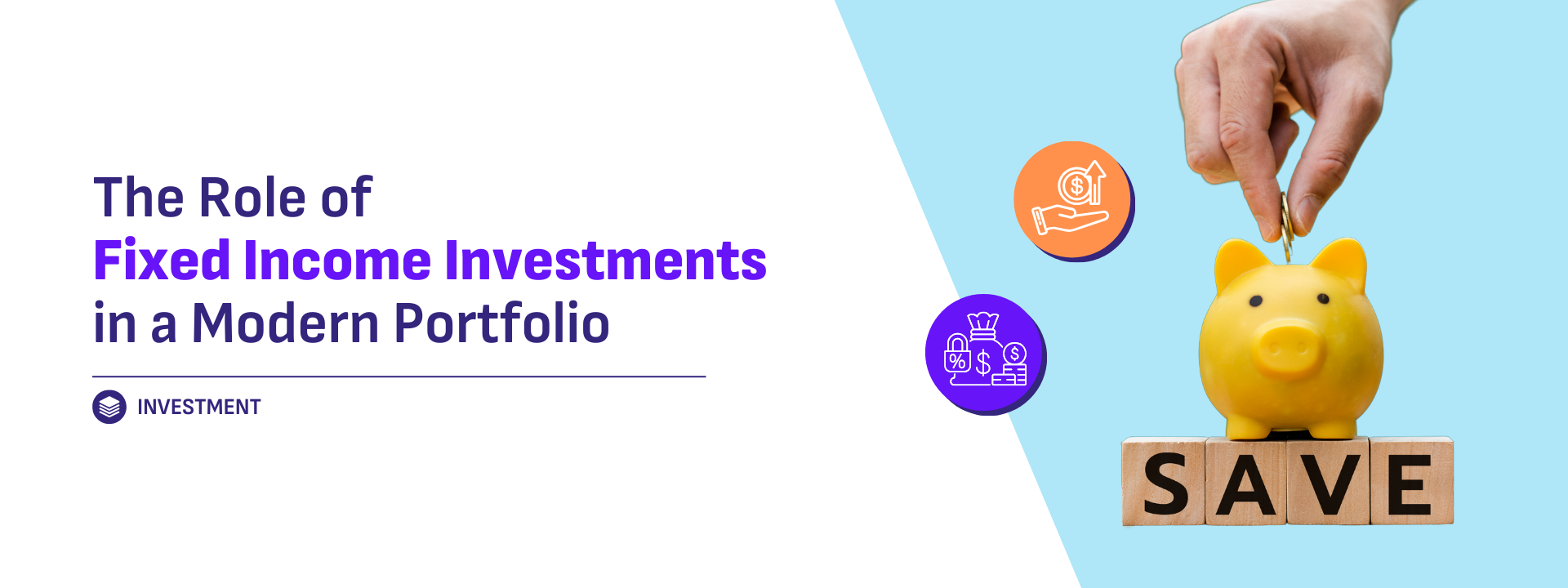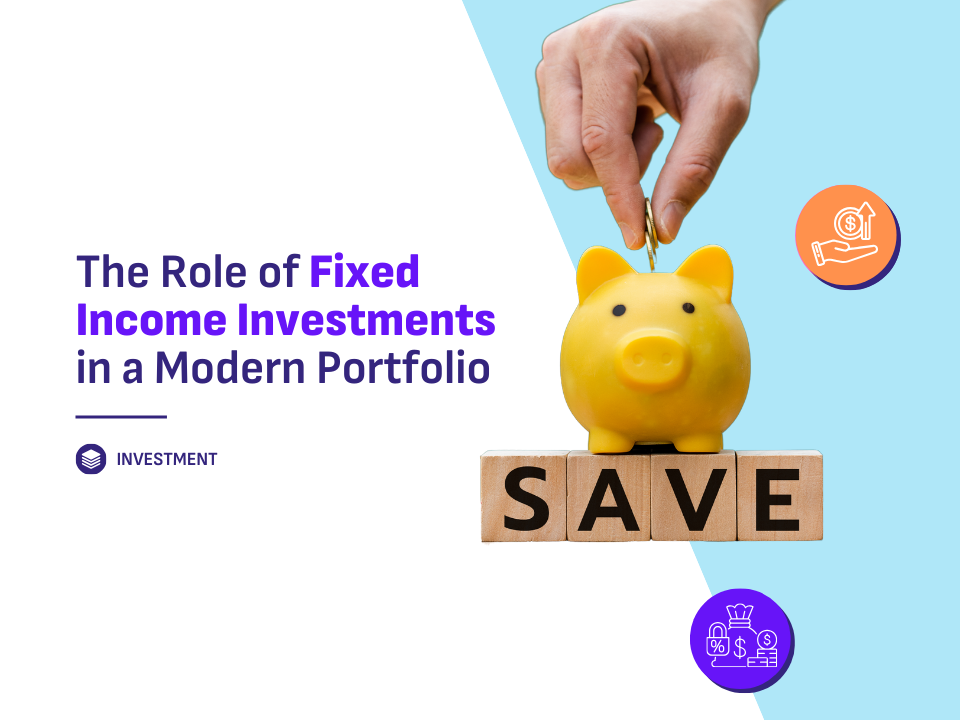

The Role of Fixed Income Investments in a Modern Portfolio
Introduction

Understanding Fixed Income Investments
Fixed income investments are financial instruments that provide regular interest payments and return the principal amount at maturity. Common examples include government bonds, corporate bonds, municipal bonds, and certificates of deposit (CDs). These securities are typically issued by governments, corporations, or municipalities to raise capital, and they offer investors a predictable income stream in exchange for lending their money.

Benefits of Fixed Income Investments
1. Stability and Capital Preservation: Fixed income investments are known for their relative stability compared to stocks. They provide regular interest payments, which can offer a predictable income stream. Additionally, many fixed income securities return the principal amount at maturity, which helps preserve capital and reduce the risk of significant losses.
2. Income Generation: Fixed income securities generate interest income, which can be an attractive feature for investors seeking regular cash flow. This steady income can be particularly beneficial for retirees or those needing consistent earnings to cover expenses.
3. Diversification: Including fixed income investments in a portfolio helps diversify risk. Bonds typically have a lower correlation with equities, meaning they often perform differently from stocks in various market conditions. This diversification can help reduce overall portfolio volatility and smooth out returns.
4. Risk Mitigation: Bonds are generally less volatile than stocks and can act as a buffer during periods of market turbulence. When equity markets decline, fixed income investments may remain stable or even increase in value, providing a counterbalance to equity losses.
5. Predictable Returns: Fixed income securities offer predictable returns through fixed interest payments, making them a reliable choice for investors who prefer a more conservative approach. This predictability can aid in financial planning and budgeting.

Risks of Fixed Income Investments
1. Interest Rate Risk: The value of fixed income securities is inversely related to interest rates. When interest rates rise, the value of existing bonds with lower rates tends to fall. This interest rate risk can lead to fluctuations in the market value of bonds and affect their performance.
2. Credit Risk: Credit risk, or default risk, is the possibility that the issuer of a bond may fail to make interest payments or repay the principal. This risk varies depending on the issuer’s creditworthiness. Government bonds are generally considered lower risk compared to corporate bonds, which may carry higher credit risk.
3. Inflation Risk: Inflation can erode the purchasing power of fixed income payments over time. If inflation rises significantly, the real value of the interest payments may decline, reducing the overall return on investment.
4. Reinvestment Risk: Reinvestment risk occurs when interest payments or principal repayments from fixed income securities need to be reinvested at lower prevailing interest rates. This risk can impact the overall yield of a fixed income portfolio if rates decline significantly.
5. Liquidity Risk: Some fixed income securities may be less liquid, meaning they are harder to buy or sell quickly without affecting their price. This can be a concern for investors who may need to access their funds before the security’s maturity date.

Incorporating Fixed Income Investments into a Modern Portfolio
1. Asset Allocation: Determine the appropriate allocation of fixed income securities based on your investment goals, risk tolerance, and time horizon. Generally, a balanced portfolio includes a mix of equities and fixed income to achieve both growth and stability. Younger investors with a higher risk tolerance may allocate a smaller portion to fixed income, while older investors or those seeking lower risk may allocate a larger portion.
2. Diversify Within Fixed Income: Within the fixed income category, diversify across different types of bonds, issuers, and maturities. This can help mitigate specific risks associated with individual bonds or sectors. Consider a mix of government, corporate, and municipal bonds, as well as varying durations to balance risk and return.
3. Monitor Interest Rates and Economic Conditions: Stay informed about interest rate trends and economic conditions that may impact fixed income investments. Adjust your portfolio as needed to respond to changes in interest rates or economic forecasts. For instance, consider shortening the duration of bonds if interest rates are expected to rise.
4. Evaluate Credit Quality: Assess the credit quality of the bonds in your portfolio. Higher credit quality generally implies lower risk, but it may also come with lower yields. Balancing credit risk with potential returns is essential for maintaining a well-rounded fixed income strategy.
5. Consider Bond Funds or ETFs: For investors seeking diversified exposure to fixed income securities, bond funds or exchange-traded funds (ETFs) can provide a convenient and cost-effective option. These funds pool investments in a diversified portfolio of bonds, offering broad exposure and professional management.


